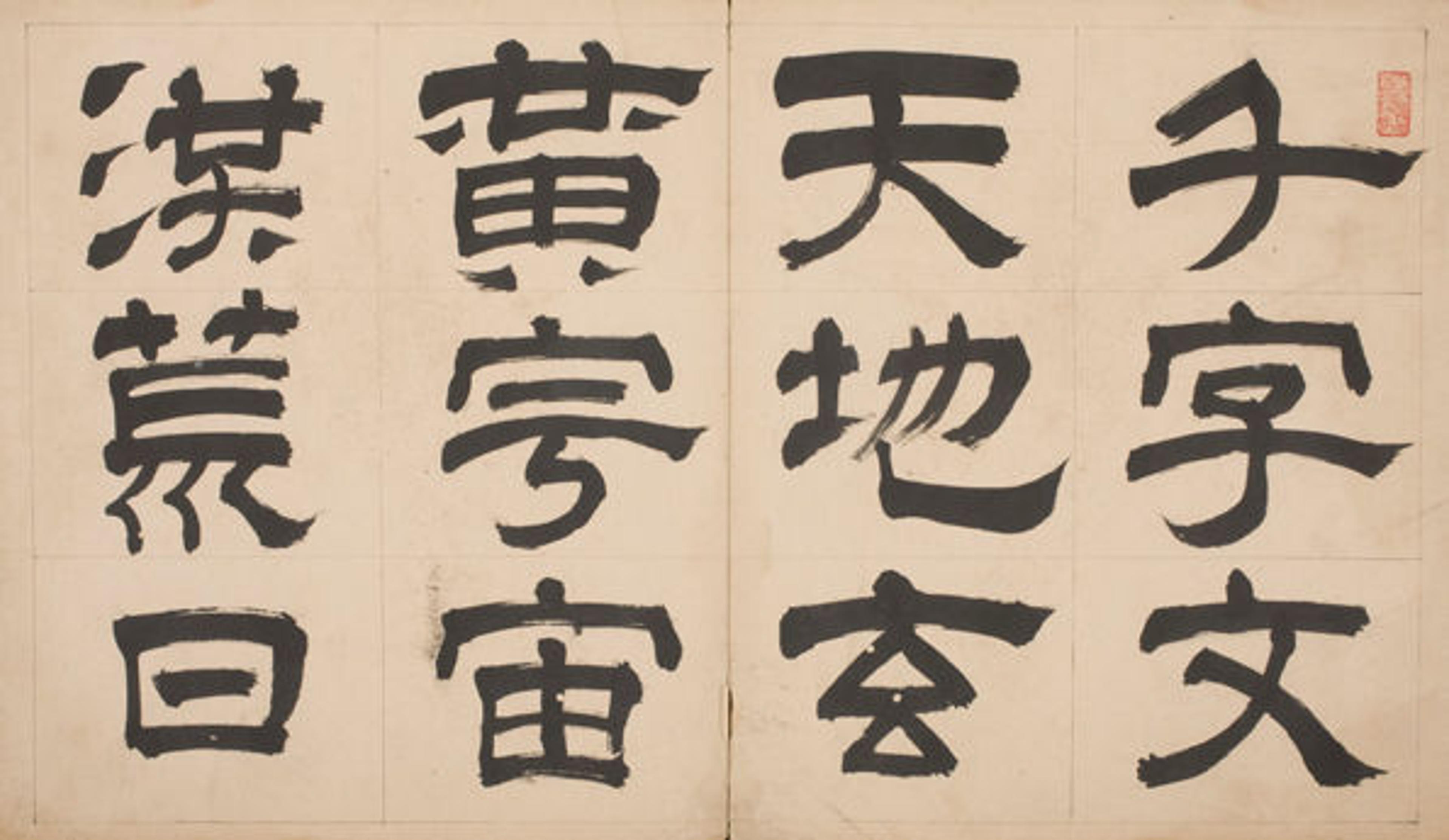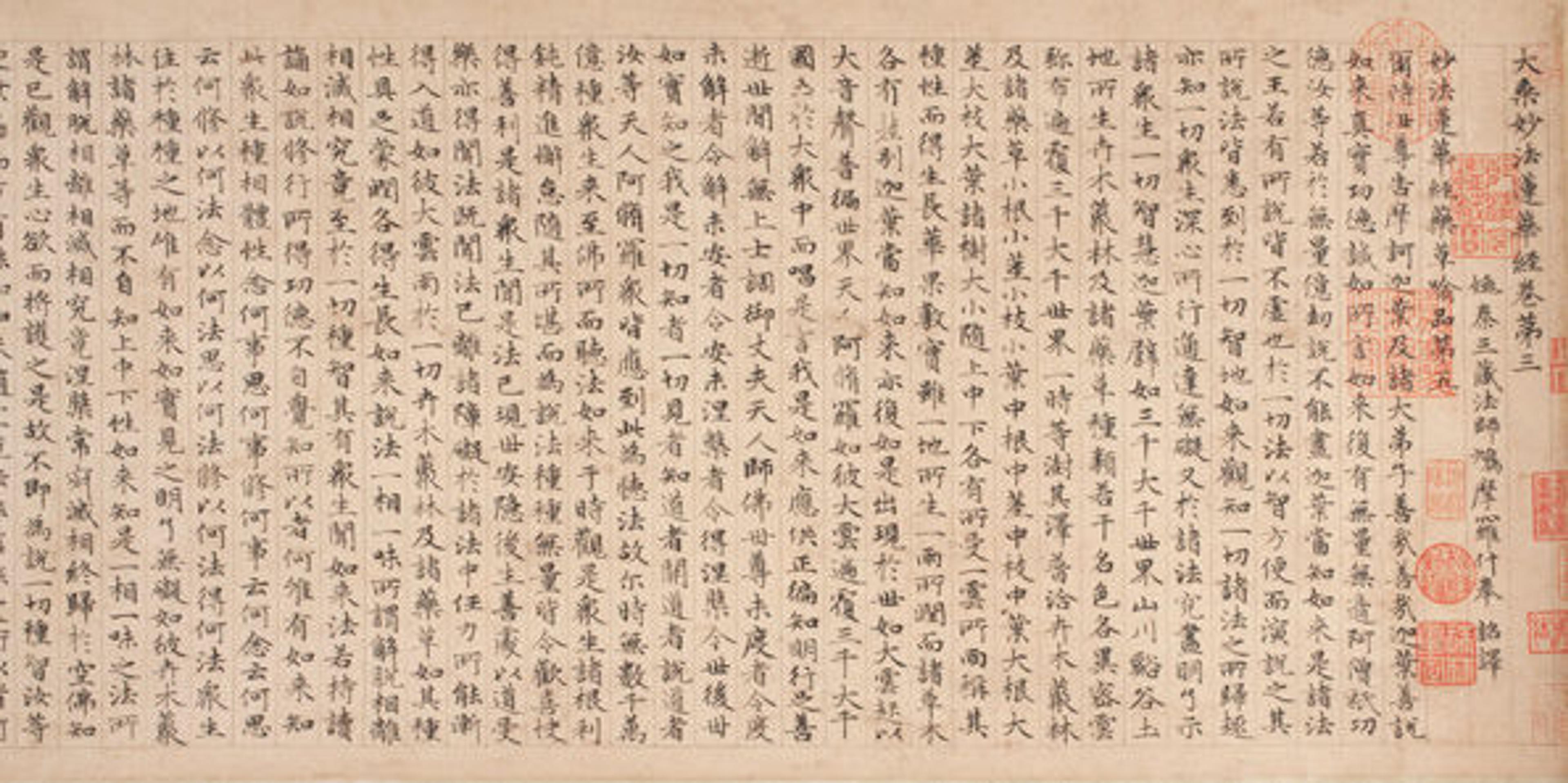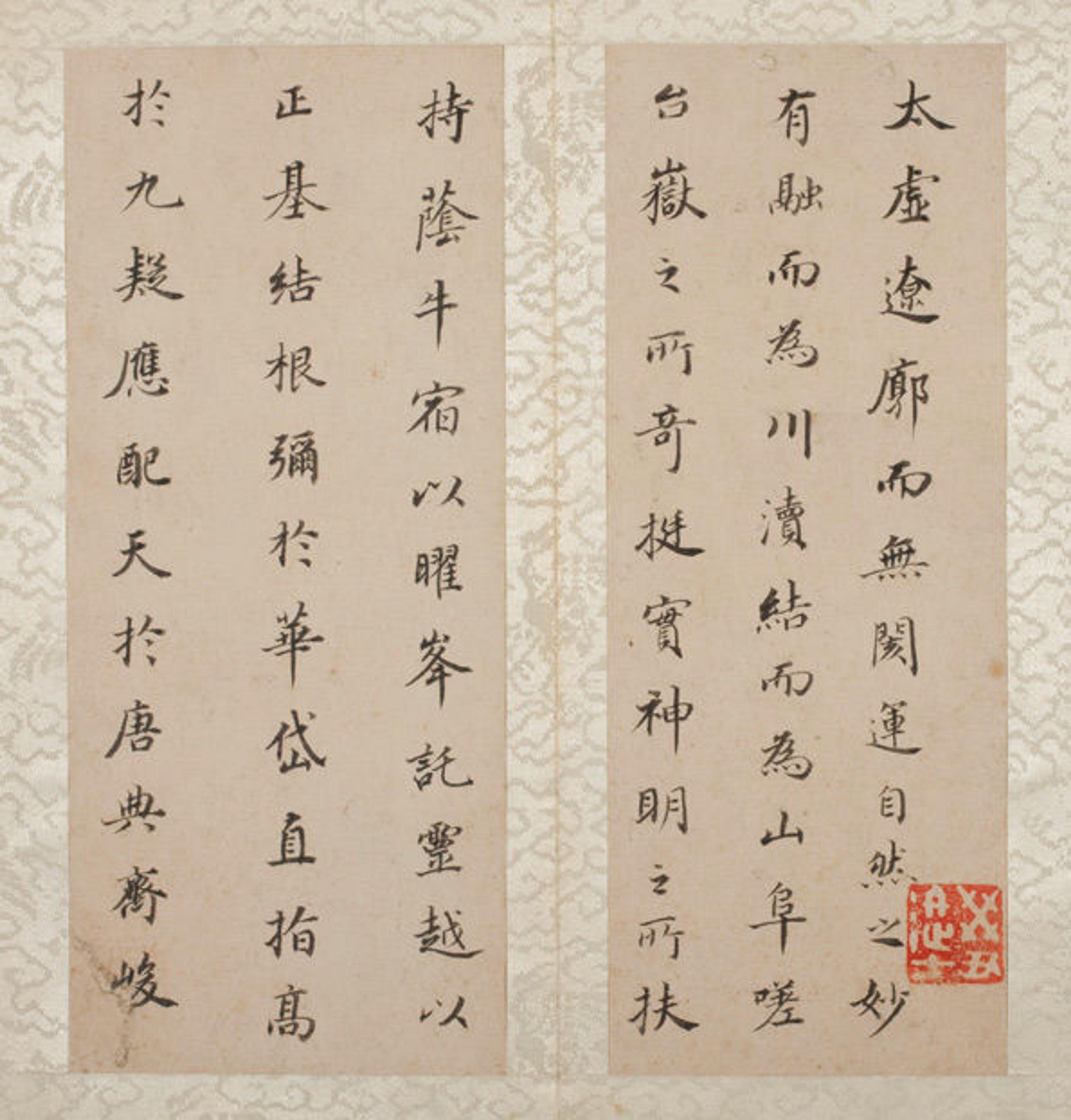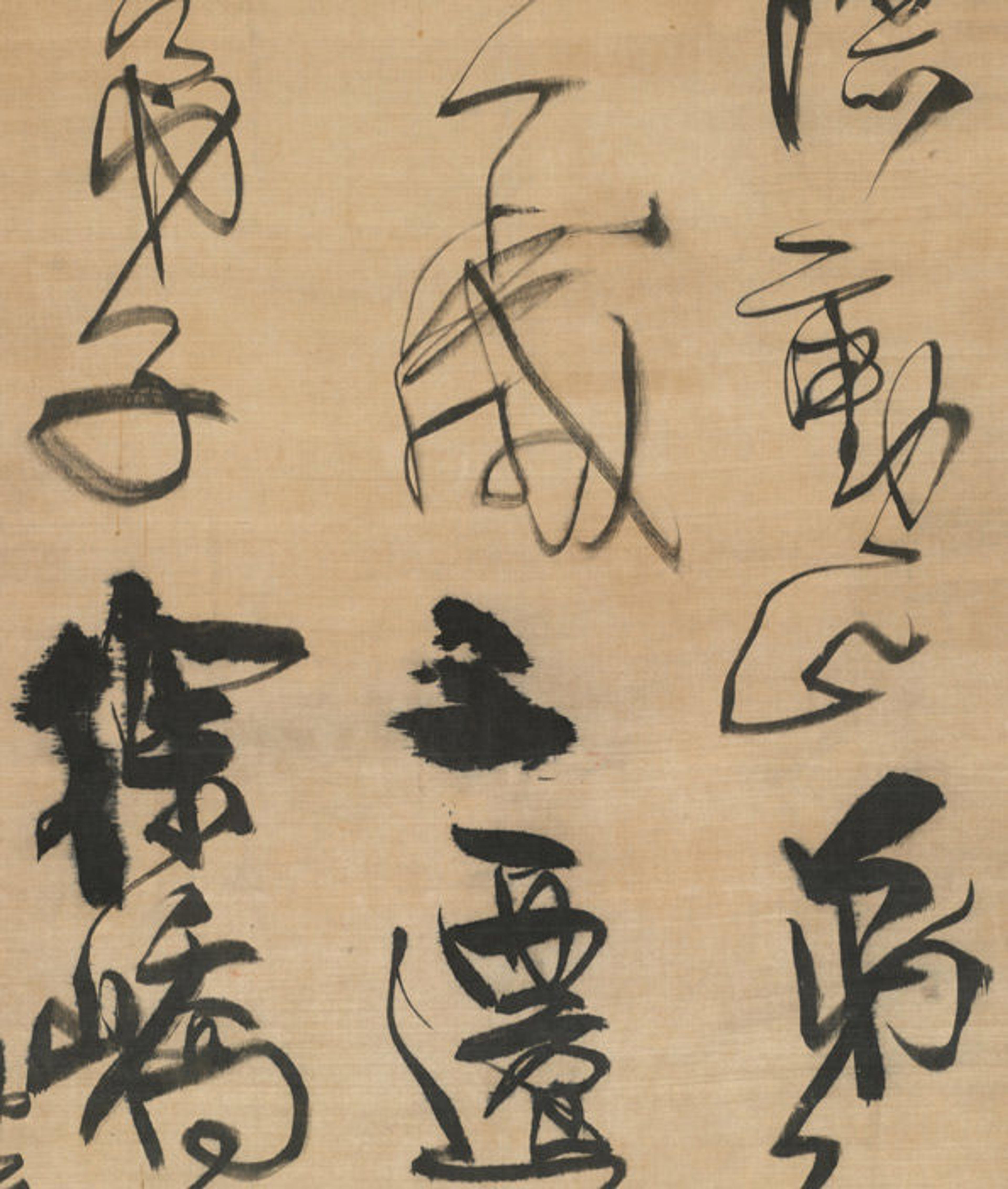
Wen Peng (Chinese, 1497–1573). Thousand-Character Classic in clerical script, dated 1561. One leaf from an album of eighty-five leaves; ink on paper; each leaf: 13 3/4 x 24 in. Lent by Guanyuan Shanzhuang Collection
«In the year 1561, the scholar, painter, and calligrapher Wen Peng sat down at his desk to write out the Thousand-Character Classic, a sixth-century poem often used by Chinese calligraphers to build or maintain their brush skills. The sixty-three-year-old Wen Peng was no stranger to the Thousand-Character Classic—he had likely written it several hundred times during his life, and no doubt knew the text by heart. But this time he did something unusual: He transcribed the text in a form of writing known as "clerical script," an archaic script used primarily for commemorative purposes; and he wrote the characters larger than normal, filling oversized sheets of paper with just twelve characters each.» It took him eighty-five sheets of paper to complete the poem. These sheets were bound together to form an album of outsized scale and graphic impact; a fresh take on a classic text. In taking something old—in this case clerical script—and turning it into something new, Wen Peng was employing one of the core strategies of Chinese calligraphy since at least the sixth century: innovation through tradition.
Wen Peng's Thousand-Character Classic is one of the highlights of the exhibition Out of Character: Decoding Chinese Calligraphy—Selections from the Collection of Akiko Yamazaki and Jerry Yang, on view through August 17. The exhibition features forty-five works of calligraphy spanning from the early fourteenth to the mid-nineteenth century, and aims to provide gateways into this rich and varied tradition, taking works like Wen's Thousand-Character Classic as opportunities to explore key concepts and themes.

Zhao Mengfu (Chinese, 1254–1322). Lotus Sutra in standard script, ca. 1315. Handscroll; ink on paper; 10 7/8 x 271 1/2 in. Lent by Guanyuan Shanzhuang Collection
The exhibition begins with an introduction to the five major script types, then moves chronologically through the Ming (1368–1644) and Qing (1644–1911) dynasties. Along the way, visitors will see the full range of stylistic possibilities—from the supreme control of Zhao Mengfu's Lotus Sutra to the unorthodox gestures of Wang Duo's Free Copy of Xu Jiaozhi's Calligraphy; and from the understated elegance of Dong Qichang's Two Prose Poems to the blunt—even violent—power of Zhang Ruitu's ten-foot-tall Poem by Wang Wei.
Out of Character also features one work of contemporary art: an animation by the MacArthur Award–winning artist Xu Bing, entitled The Character of Characters. This artwork, on view in Gallery 209, is a meditation on the evolution of Chinese characters and the practice of calligraphy, and it provides a thoughtful and provocative coda to the exhibition. The Character of Characters was commissioned specifically for Out of Character with support from the Robert H.N. Ho Family Foundation.

Dong Qichang (Chinese, 1555–1636). Two Prose Poems: Mt. Tiantai and Parrot in standard script, dated 1610. Album of four double leaves; ink on paper; 10 7/8 x 10 3/4 in. Lent by Guanyuan Shanzhuang Collection

Wang Duo (Chinese, 1592–1652). Free Copy of Xu Jiaozhi's Calligraphy in semicursive script (detail), dated 1635. Hanging scroll; ink on satin; 106 5/8 x 20 in. Lent by Guanyuan Shanzhuang Collection